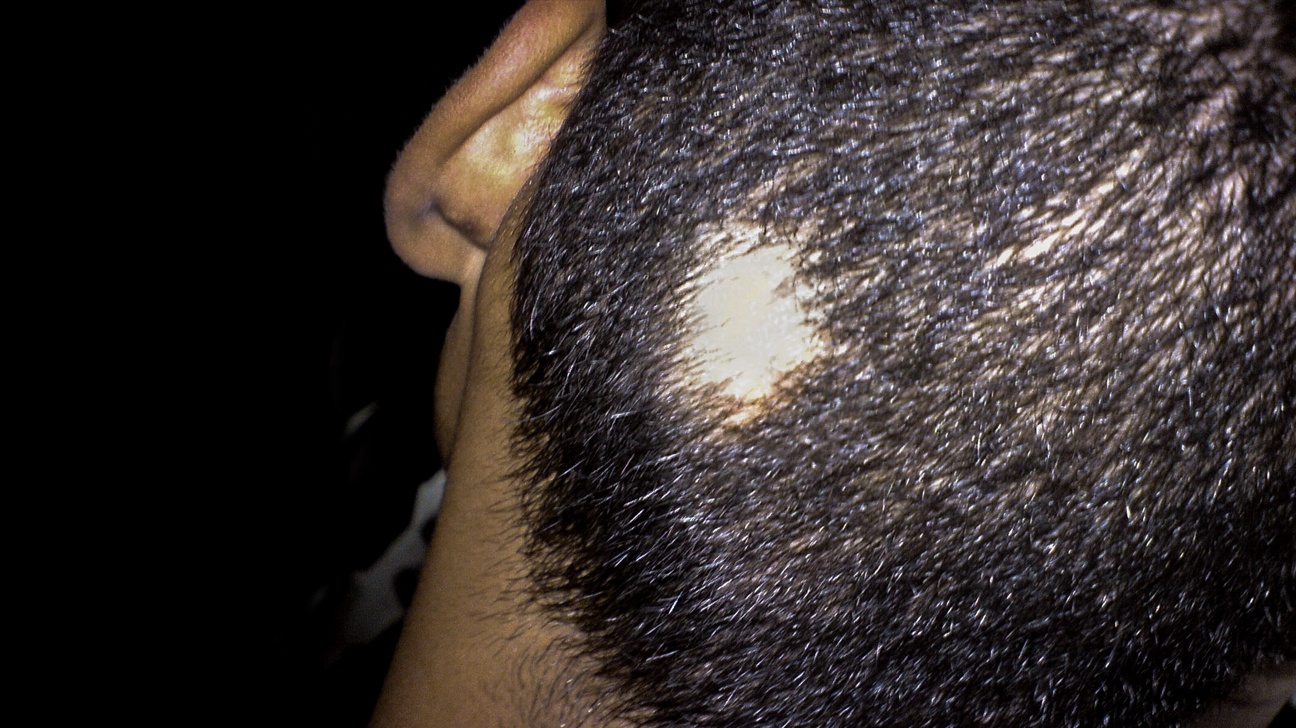PATCHY HAIR LOSS
Also called alopecia areata
Alopecia areata is a condition that causes hair to fall out in small patches, which can be unnoticeable. These patches may connect, however, and then become noticeable. The condition develops when the immune system attacks the hair follicles, resulting in hair loss.
Sudden hair loss may occur on the scalp, and in some cases the eyebrows, eyelashes, and face, as well as other parts of the body. It can also develop slowly and recur after years between instances.
The condition can result in total hair loss, called alopecia universalis, and it can prevent hair from growing back. When hair does grow back, it’s possible for the hair to fall out again. The extent of hair loss and regrowth varies from person to person.
There are treatments that may help hair grow back more quickly and that can prevent future hair loss, as well as unique ways to cover up the hair loss. Resources are also available to help people cope with stress related to hair loss.
Treatment
There are treatments that you can try that might be able to slow down future hair loss or help hair grow back more quickly.
Medical treatments
Topical agents
You can rub medications into your scalp to help stimulate hair growth. A number of medications are available, both over-the-counter (OTC) and by prescription:
Causes of alopecia areata
Alopecia areata is an autoimmune condition. An autoimmune condition develops when the immune system mistakes healthy cells for foreign substances. Normally, the immune system defends your body against foreign invaders, such as viruses and bacteria.
If you have alopecia areata, however, your immune system mistakenly attacks your hair follicles. Hair follicles are the structures from which hairs grow. The follicles become smaller and stop producing hair, leading to hair loss.
Researchers don’t know the exact cause of this condition.
However, it most often occurs in people who have a family history of other autoimmune conditions, such as type 1 diabetes or rheumatoid arthritis. This is why some scientists suspect that genetics may contribute to the development of alopecia areata.
They also believe that certain factors in the environment are needed to trigger alopecia areata in people who are genetically predisposed to it.
Symptoms of alopecia areata
The main symptom of alopecia areata is hair loss. Hair usually falls out in small patches on the scalp. These patches are often several centimeters or less.
Hair loss might also occur on other parts of the face, like the eyebrows, eyelashes, and beard, as well as other parts of the body. Some people lose hair in a few places. Others lose it in a lot of spots.
You may first notice clumps of hair on your pillow or in the shower. If the spots are on the back of your head, someone may bring it to your attention. However, other health conditions can also cause hair to fall out in a similar pattern. Hair loss alone isn’t used to diagnose alopecia areata.

In rare cases, some people may experience more extensive hair loss. This is usually an indication of another type of alopecia, such as:
- Alopecia totalis, which is the loss of all hair on the scalp ·
- Alopecia universalis, which is the loss of all hair on the entire body The hair loss associated with alopecia areata is unpredictable .
The hair may grow back at any time and then may fall out again. The extent of hair loss and regrowth varies greatly from person to person.
Alopecia areata in males
Alopecia areata occurs in both men and women, but the loss of hair is likely to be more significant in men. Men are also more likely to have a family history of hair loss condition.
Men may experience hair loss in their facial hair, as well as their scalp, chest, and back hair. Compared to male-pattern baldness, which is a gradual thinning of hair all over, hair loss from this condition causes patchy hair loss.
Alopecia areata in females
Females are more likely to develop alopecia areata than males, but it’s not clear why. The hair loss can occur on the scalp, as well as the eyebrows and lashes. Unlike female-pattern hair loss, which is a gradual thinning of hair that covers a large area, alopecia areata may be confined to a small area. The hair loss may occur all at once, too. The area can gradually expand, which results in greater hair loss.
Types
Several types of alopecia areata exist. Each type is characterized by the extent of hair loss and other symptoms you may be experiencing. Each type may also have a slightly different treatment and prognosis
Alopecia areata (patchy)
The main characteristic of this type of alopecia areata is one or more coin-sized patches of hair loss on the skin or body. If this condition expands, it may become alopecia totalis or alopecia universalis.
Alopecia totalis
Alopecia totalis occurs when you have hair loss across the entire scalp.
Alopecia universalis
In addition to losing hair on the scalp, people with this type of alopecia areata also lose all hair on the face — eyebrows and eyelashes. It’s also possible to lose other body hair, including chest, back, and pubic hair.
Diffuse alopecia areata
Diffuse alopecia areata may look a lot like female- or male-pattern hair loss. It results in sudden and unexpected thinning of hair all over the scalp, not in just one area or patch.
Ophiasis alopecia
Hair loss that follows a band along the sides and lower back of the scalp is called ophiasis alopecia.
WHAT ARE THE TREATMENT AVAILABLE FOR PATCHY HAIR LOSS AT KAYNA?
- PRP THERAPY
- GFC THERAPY
- MESOTHERAPY
- MICRONEEDLING
- LOW LASER LIGHT THERAPY
- HAIR TRANSPLANT

